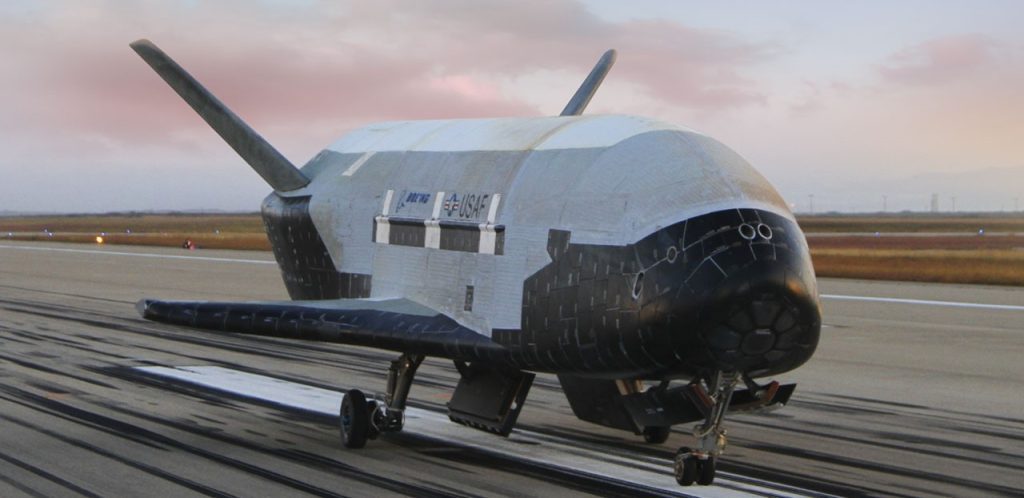 Image credit: Boeing.com
Image credit: Boeing.com The Pentagon would not comment on any statement made. (2018 saw SpaceX secure the $130 million launch contract). Additionally, the X-37B‘s seventh mission, scheduled to launch on Sunday at 8:14 p.m. Eastern, is still shrouded in mystery. However, there are some indications that at least a little has changed this time.
The unmanned aerial vehicle (drone), which can fly without an operator, will be launched for the first time on SpaceX’s formidable Falcon Heavy rocket, which carries more thrust than its previous rockets. This has given rise to rumors that the mission will be in a much higher orbit, which current documents seem to support.
It is said that the mission includes “a wide range of test and experimentation objectives,” Pentagon’s official statement, “These tests include operating the reusable spaceplane in new orbital regimes, experimenting with future space domain awareness technologies.”
The Secretive Mission
The mention of “space domain awareness” may imply that it will be monitoring other satellites and possibly keeping an eye out for any threats. Gaining a deeper understanding of the vastness of space, including the locations and actions of adversarial spacecraft, has emerged as a critical mission for the U.S. Space Force. The Space Force’s chief of space operations, Gen. Chance Saltzman, told Congress earlier this year that “our space systems are threatened by a variety of growing antisatellite capabilities, and the joint force is threatened by increasingly sophisticated adversary space-based systems intended to target the joint force.”
Even though the details of the missions of X-37B will remain behind hidden walls, it triggers debates regarding the militarization of space. The Pentagons developments give off information regarding the advancements of China with the Shenlong spacecraft. The merging of stories of the Pentagons missions along with China’s close technologies just strengthen the advancement of space arms.
The mission’s at least partially known. In an experiment for NASA, the vehicle will “expose plant seeds to the harsh radiation environment of long-duration spaceflight.” The Pentagon has previously tested several of its cutting-edge technologies on the X-37B, such as a tiny solar panel that converts solar energy into microwaves, a technology that may one day enable energy harvested in space to be beam back to Earth.
X-37B’s Satellite Secrecy
Small satellites have also been launched from the Boeing-built X-37B, though it was unclear what those satellites accomplished.
According to Brian Weeden, director of program planning at the think tank Secure World Foundation, “the U.S. government is in this weird place where they brag publicly about how amazing it is and cutting edge, but will not provide any info about it.”
The Shenlong, a covert reusable spacecraft built in China, has completed two missions to date. After spending 276 days in orbit, the last one landed in May. It is extremely secretive, just like the X-37B, and no public images of it have been made available. However, Weeden noted that it does seem to have been influenced by its American cousin. Weeden explained that the Chinese perspective is that “if the Americans think it’s important, then maybe we should invest in this.”
The Mission
The X-37B mission on Sunday may spend some time in space if it is anything like earlier missions. Launched in 2010, the first flight lasted 224 days. Since then, every mission has grown longer; at the end of its most recent flight in November 2022, it had spent 908 days in orbit when it landed at Cape Canaveral. The spacecraft has now been in orbit for more than ten years, giving the Pentagon a wealth of information about various components’ performance over long periods of time in space.
Inside Telecom provides you with an extensive list of content covering all aspects of the tech industry. Keep an eye on our Tech sections to stay informed and up-to-date with our daily articles.